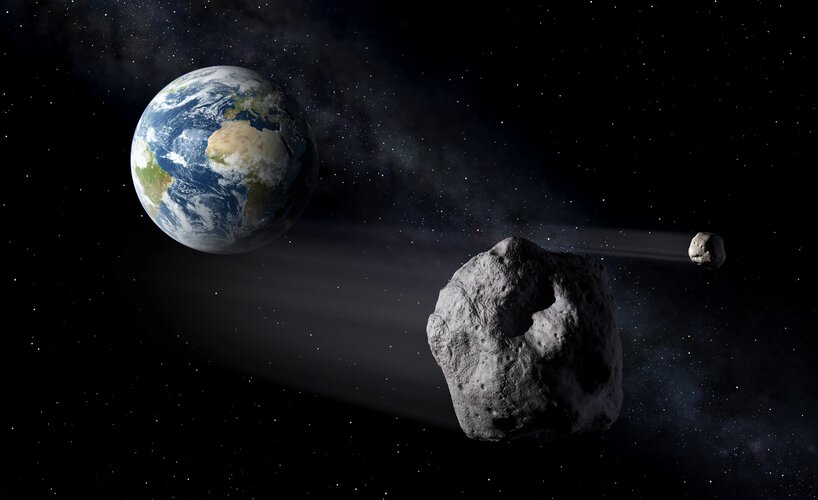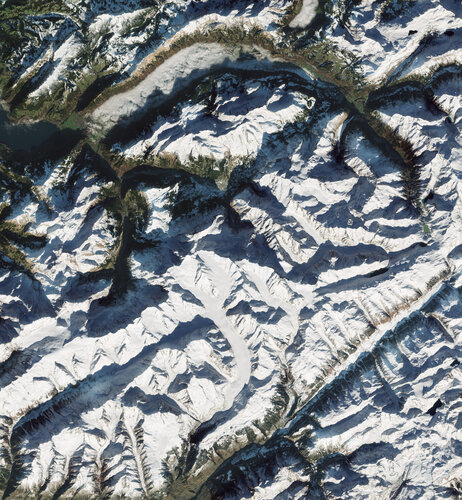
Copernical Team
Busy day of research, lab maintenance, and cargo operations aboard ISS
 The crew members of Expedition 72 dedicated their Thursday to a range of scientific investigations, station maintenance, and logistical operations aboard the International Space Station (ISS). The astronauts and cosmonauts worked together to ensure the orbital laboratory remains in optimal condition for ongoing research.
NASA Flight Engineers Nick Hague and Don Pettit focused on assessing
The crew members of Expedition 72 dedicated their Thursday to a range of scientific investigations, station maintenance, and logistical operations aboard the International Space Station (ISS). The astronauts and cosmonauts worked together to ensure the orbital laboratory remains in optimal condition for ongoing research.
NASA Flight Engineers Nick Hague and Don Pettit focused on assessing New method employs atomic clocks and lasers to probe dark matter
 A team of international researchers has introduced an innovative approach to detecting dark matter, leveraging atomic clocks and ultra-stable lasers to investigate the enigmatic substance believed to hold galaxies together.
University of Queensland PhD student Ashlee Caddell co-led the study in collaboration with Germany's Physikalisch-Technische Bundesanstalt (PTB), using high-precision a
A team of international researchers has introduced an innovative approach to detecting dark matter, leveraging atomic clocks and ultra-stable lasers to investigate the enigmatic substance believed to hold galaxies together.
University of Queensland PhD student Ashlee Caddell co-led the study in collaboration with Germany's Physikalisch-Technische Bundesanstalt (PTB), using high-precision a Efforts to Detect Alien Life Advanced by Simple Microbe Mobility Test
 The search for extraterrestrial life remains one of humanity's most ambitious scientific pursuits. A promising approach to identifying life is through detecting motile microorganisms, which demonstrate independent movement-a strong indicator of biological activity. When such movement is triggered by a chemical stimulus, it is termed chemotaxis.
A team of German researchers has now develope
The search for extraterrestrial life remains one of humanity's most ambitious scientific pursuits. A promising approach to identifying life is through detecting motile microorganisms, which demonstrate independent movement-a strong indicator of biological activity. When such movement is triggered by a chemical stimulus, it is termed chemotaxis.
A team of German researchers has now develope Lunar rocks help scientists pinpoint when the moon crystallized
 scientists study samples from Apollo missions, reveal new details about lunar history
Even though humans have pondered the moon since the first of us looked skyward, there is still much we still don't know about it.
One of these unsolved questions is its origin story. We think the moon formed after a colossal collision between Earth and another huge object created two balls of molten magm
scientists study samples from Apollo missions, reveal new details about lunar history
Even though humans have pondered the moon since the first of us looked skyward, there is still much we still don't know about it.
One of these unsolved questions is its origin story. We think the moon formed after a colossal collision between Earth and another huge object created two balls of molten magm Rocket Lab launches 5th satellite batch for Kineis IoT constellation
 Rocket Lab USA, Inc. (Nasdaq: RKLB), a global leader in launch services and space systems, achieved a significant milestone today with the successful deployment of five satellites for French Internet-of-Things (IoT) operator Kineis. This marks Rocket Lab's 59th Electron mission.
The mission, designated "IOT 4 You and Me," launched from Rocket Lab Launch Complex 1 in Mahia, New Zealand at 9
Rocket Lab USA, Inc. (Nasdaq: RKLB), a global leader in launch services and space systems, achieved a significant milestone today with the successful deployment of five satellites for French Internet-of-Things (IoT) operator Kineis. This marks Rocket Lab's 59th Electron mission.
The mission, designated "IOT 4 You and Me," launched from Rocket Lab Launch Complex 1 in Mahia, New Zealand at 9 Die Erde aus dem Weltraum: Schneebedeckte Schweizer Alpen
 Image:
Die Bergketten und Täler der Schweizer Alpen sind auf diesem Bild zu sehen, das die Copernicus Sentinel-2 Mission im Dezember 2024 aufgenommen hat.
Image:
Die Bergketten und Täler der Schweizer Alpen sind auf diesem Bild zu sehen, das die Copernicus Sentinel-2 Mission im Dezember 2024 aufgenommen hat. Space weather station
 Video:
00:00:46
Video:
00:00:46
Over the course of a whole day, Norway’s plasma sampler, the multi-Needle Langmuir Probe (m-NLP), is seen being slowly moved around by a robotic arm to be slotted into place on the outside porch of Bartolomeo – the Airbus-operated platform attached to the Columbus laboratory of the International Space Station (ISS).
Since its integration on Bartolomeo in September 2023, the task of this instrument has been to sample its immediate space weather environment by measuring the plasma surrounding the ISS. It does so to an extraordinarily high level of detail, making a few thousand measurements per second.
Plasma, sometimes
ESA endorses Year of Asteroid Awareness and Planetary Defence

The European Space Agency (ESA) has endorsed the United Nations' (UN) designation of 2029 as the International Year of Asteroid Awareness and Planetary Defence.
The initiative will foster international collaboration in the field of planetary defence and educate the public on the risks and opportunities associated with near-Earth asteroids.
Earth from Space: Snow-capped Swiss Alps
 Image:
The ranges and valleys of the Swiss Alps stand out in this image captured by the Copernicus Sentinel-2 mission in December 2024.
Image:
The ranges and valleys of the Swiss Alps stand out in this image captured by the Copernicus Sentinel-2 mission in December 2024. Week in images: 03-07 February 2025

Week in images: 03-07 February 2025
Discover our week through the lens

